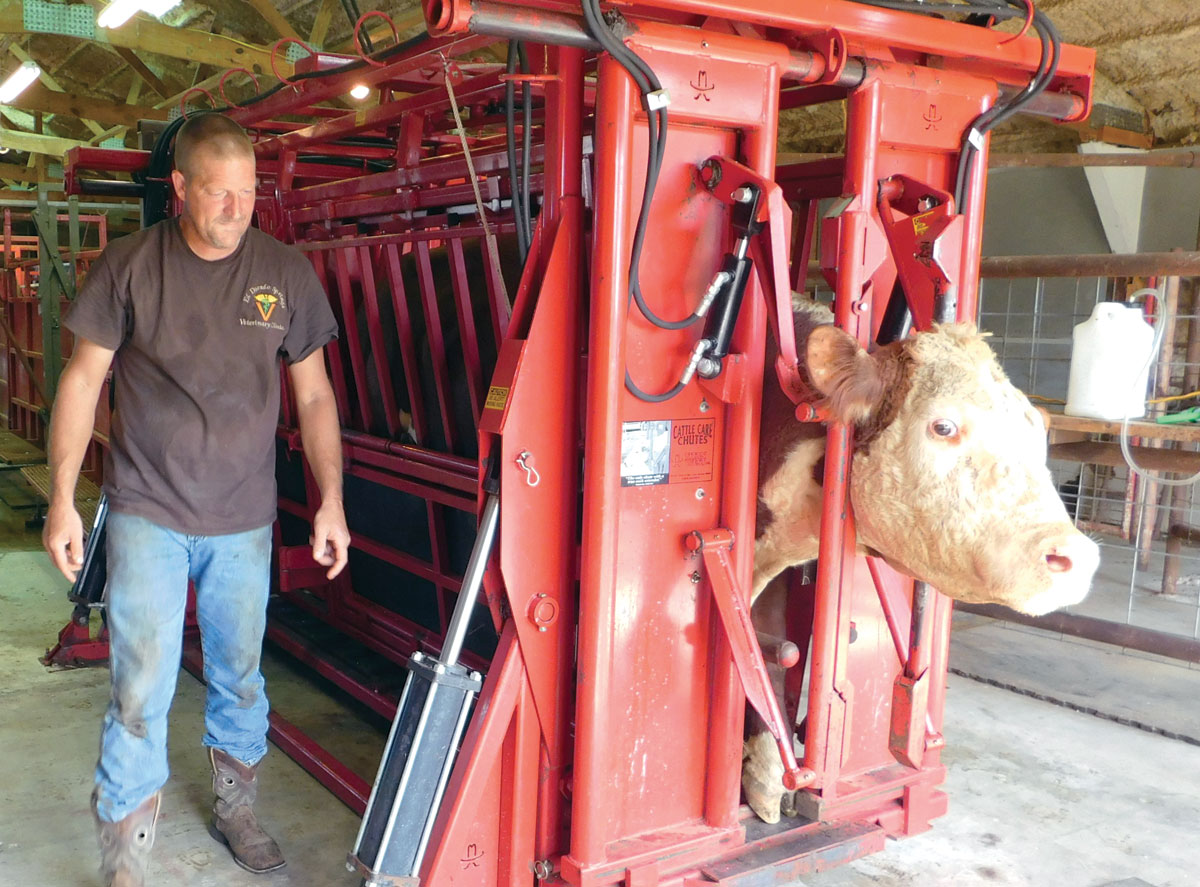 All of Cody Gariss’ cattle have heterosis.
All of Cody Gariss’ cattle have heterosis.
That may sound like a disease of some sort but it is just another way of naming hybrid vigor, something most producers want in their herds. Rancher Cody Gariss explains further, “It more accurately describes the added growth that cross-breeding provides.”
In the middle of what might be considered “row-crop” country in a flatter area of southwest Missouri, lies Barton County, home to a three-generation operation on more than 2,000 acres owned or leased by Cody Gariss and his family. This includes his dad and grandfather, former auctioneers. They run more than 400 mature Brangus cows along with some stocker cattle.
Brangus is a composite breed. It is technically 3/8 Brahman and 5/8 Angus. Brahmans originated in south Asia. Angus, of course, comes from the high country in Scotland. Mix them together and you get…
“A shot of ear works better on this fescue, handling the endophyte, handling the summer. It keeps these cows out of the pond and out of the shade,” is another way Cody describes the advantages of his Brangus. It means they are out grazing more of the time, even on the hottest days of summer.
He goes on to talk about fertility, longevity, carcass value, increased disease resistance; more positive traits of this breed. His Brangus don’t have the larger hump often associated with Brahman. To the untrained eye, they look pretty much like Angus.
All of Cody’s registered Brangus cows are AI’d. Brangus and Ultra Black herd bulls are used for cleanup on the commercial cattle.
Cody, a 2005 Missouri State University grad, is on the board of the International Brangus Breeders Association so it’s logical he’s going to be a cheerleader for the breed. Another local Brangus connection is former MSU Professor, Tommy Perkins, now Executive Vice-President of the association.
Cody also does work for GENETRUST, a marketing coop and one of the largest single-source suppliers of Brangus cattle in the world.
Easy Calving, Hard Culling
Nobody likes calving problems and according to Cody, you won’t find them here either.
“If we pull a calf, it‘s because she’s got a leg down or backwards.” Birth weights are moderate.
But the gains are anything but. Cody mentioned a 4.2 pounds-per-day gain and a very high DMI (dry matter intake) conversion on a recently harvested load.
“They’ll grade with the Angus all day long and then out-yield them.” And grade they do with unofficially more than 70 percent choice and a majority qualifying for CAB (Certified Angus Beef.)
Cody spring calves and sells yearlings in a February – June window. He culls hard.
“There is nothing more important than a cow’s ability to lay down and have a calf. If a cow is not fertile, if she’s not having a calf every 365 days, she won’t last long around this place.”
Cody doesn’t give many second chances. “We are in the cow business to make a living. We expect a lot. Sometimes it hurts to sell some of those cows but you are better off in the long run.”
He’ll keep 60-80 heifers a year for replacements.
Why Brangus in Angus Country?
Cody answers: “Brangus has an advantage to give a good shot of heterosis to get you 30, 50, 70 more pounds of weaning off the calf crop, and still have a product that is black and consistent and has the ability to feed.
“It’s hard to imagine anyone else having a hold on the market like Angus does. There are so many of them out there. I think Angus will always be kind of the king and then Brangus and everyone else will slide in wherever we fit.”
As cattle producers ride the current wave of higher prices, how does Cody see the industry?
“We are sitting pretty good, awful good today. Better than any of us could ever fathom. It could drop back several dollars and still be better than we hoped it could be.
“I think we are going to have a hard time rebuilding this cow herd back to the point it was. I spend time in Texas with GENETRUST. Those guys in Texas are going to have a hard time ever rebuilding back to where they were.
“Here in southwest Missouri, so much of this ground has been tore up out of grass and into crop ground, we’ll have a hard time getting back into grass unless this corn market stays where it’s at for an extended period of time.
“I think that puts the cow business and the cow/calf guy in a pretty good position but you never know when the politics of the world and outside factors will affect the market.
And with a smile he added, “We are in a good position, but politics or Oprah could ruin that in the next five minutes.”







